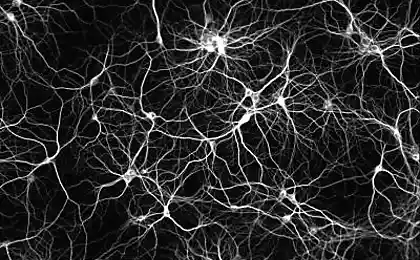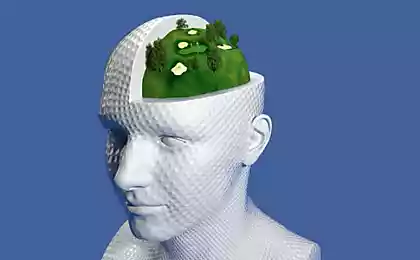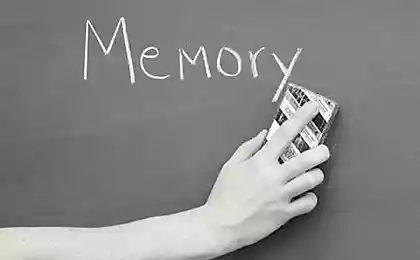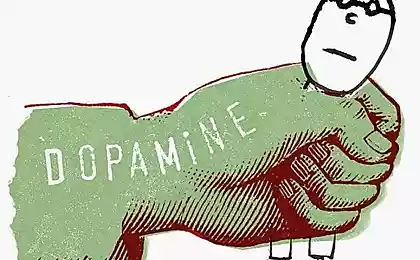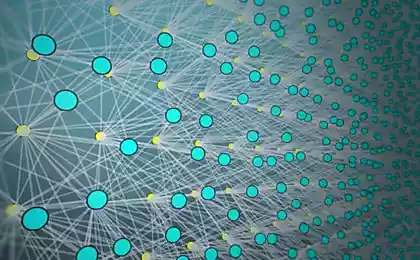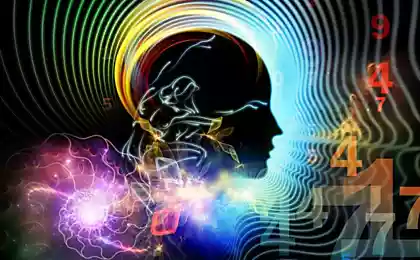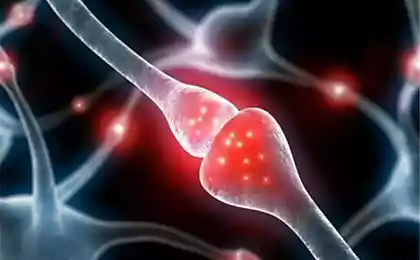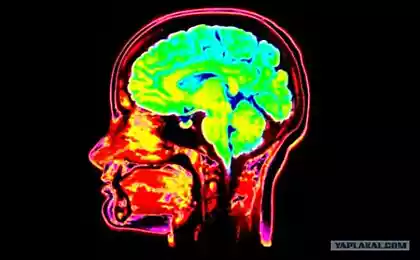502
Neurons navigate: how the brain remembers where he was
Special neurons in the memory centers help the brain to remember where he was for a long time, which recently, and what lies ahead.
As we know, the brain has special neurons called neuronal navigation – they are activated in response to the aggregate features of the landscape, which at the moment is the individual.
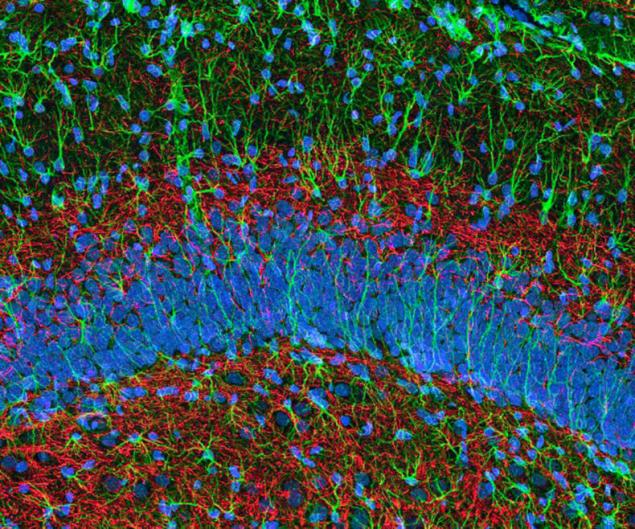
A section through the mouse hippocampus Are neurons of navigation in the hippocampus, a key brain memory centers, and many experiments have shown that it really kept a lot of maps, each of which encodes a particular combination of specific cells.
John O'keefe (John O'keefe), who discovered these cells back in the 60-ies of the last century, received in 2014 the Nobel prize in physiology or medicine. (Recall that the prize he shared with spouses Maserati who opened another group of navigation neurons working like a GPS system: they do not store any specific cards, their task is to track the movement of individual in space.)
Thanks to brain navigation system animals and we understand where the place cells provide us with relevant maps. But surely many people came into my head a question: how the brain maps these maps with the current time? For example, we go the familiar route through three streets, and now, coming to second street, we understand that first left us behind, and soon we will reach the third, and we represent a street number three, not number one. And how is the brain able to control the "map Department"?
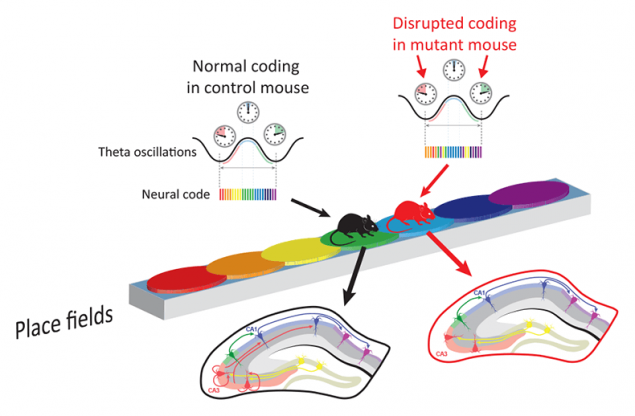
Steven Middleton Steven Middleton J) and Thomas McHugh, Thomas McHugh J) from the Institute of brain research at the Japanese Institute of physical and chemical research (RIKEN) describe the mechanism by which the brain carries out the shift maps. In the hippocampus there are several departments, and the mechanism of change maps associated with one of them, called CA3, which serves as a kind of "conductor" distributing activation between map cells.
The experiments were made on mice when the animals moved, they could register the activity of place cells. When the animal moves from place to place, you may notice changes in activity of nerve cells, which correspond to the changes all around. We can say that in neurons there is something like information updates, and such updates are performed with a theta frequency of 8 Hz. As a result, the pattern of activity is changing, and maps of the area shifted in time – something we left behind, somewhere to come, somewhere to be right there.
But the authors followed not only the activity of individual neurons, they also measured the total activity of large clusters of nerve cells. Some of the mice were off the CA3 region from other areas of the brain – cells themselves were active, but could not communicate with neurons of other "departments". It was found that these modified mice stopped the updates agreed at the level of neuronal groups (though individual neurons continued to adjust their own activity). As a result, although the way the animal was known, it was impossible to predict how will work its place cells.
So it became clear that the CA3 area is running something of a chronometer, which helps the navigation system of the brain not to be lost in time. If from CA3 to disabled, the mapping system will begin to accumulate errors due to the mismatched of neurons-cartographers – those cells that have worked before will be added a little later those who have to work later, will be activated ahead etc.
As a result, although the brain will still understand where he is at the moment, the recent place, or purpose of travel will be blurred in time. For example, it may seem that very recently, just ten minutes ago in front of us was an area that we passed an hour ago or something to some place you need to go on and on, although in reality it's just around the corner.
About the microbiome: How microbes control the health of the people
How does the brain: the substantia nigra
Here we can recall that similar symptoms – lost in space-time – occur in people with neuropsychiatric disorders (such as schizophrenia) and neurodegenerative diseases (such as Alzheimer's).
Obviously, all this is happening due to disturbed interaction between the above area and CA3 place cells, the hippocampus holds the map information. And if you find a way to restore or enhance the contact between the CA3 and other brain areas, it will allow, at least, mitigate mental anomalies associated with the spatio-temporal disorientation.published
Author: Cyril Stasevich
P. S. And remember, only by changing their consumption — together we change the world! ©
Source: www.nkj.ru/news/28877/
As we know, the brain has special neurons called neuronal navigation – they are activated in response to the aggregate features of the landscape, which at the moment is the individual.

A section through the mouse hippocampus Are neurons of navigation in the hippocampus, a key brain memory centers, and many experiments have shown that it really kept a lot of maps, each of which encodes a particular combination of specific cells.
John O'keefe (John O'keefe), who discovered these cells back in the 60-ies of the last century, received in 2014 the Nobel prize in physiology or medicine. (Recall that the prize he shared with spouses Maserati who opened another group of navigation neurons working like a GPS system: they do not store any specific cards, their task is to track the movement of individual in space.)
Thanks to brain navigation system animals and we understand where the place cells provide us with relevant maps. But surely many people came into my head a question: how the brain maps these maps with the current time? For example, we go the familiar route through three streets, and now, coming to second street, we understand that first left us behind, and soon we will reach the third, and we represent a street number three, not number one. And how is the brain able to control the "map Department"?

Steven Middleton Steven Middleton J) and Thomas McHugh, Thomas McHugh J) from the Institute of brain research at the Japanese Institute of physical and chemical research (RIKEN) describe the mechanism by which the brain carries out the shift maps. In the hippocampus there are several departments, and the mechanism of change maps associated with one of them, called CA3, which serves as a kind of "conductor" distributing activation between map cells.
The experiments were made on mice when the animals moved, they could register the activity of place cells. When the animal moves from place to place, you may notice changes in activity of nerve cells, which correspond to the changes all around. We can say that in neurons there is something like information updates, and such updates are performed with a theta frequency of 8 Hz. As a result, the pattern of activity is changing, and maps of the area shifted in time – something we left behind, somewhere to come, somewhere to be right there.
But the authors followed not only the activity of individual neurons, they also measured the total activity of large clusters of nerve cells. Some of the mice were off the CA3 region from other areas of the brain – cells themselves were active, but could not communicate with neurons of other "departments". It was found that these modified mice stopped the updates agreed at the level of neuronal groups (though individual neurons continued to adjust their own activity). As a result, although the way the animal was known, it was impossible to predict how will work its place cells.
So it became clear that the CA3 area is running something of a chronometer, which helps the navigation system of the brain not to be lost in time. If from CA3 to disabled, the mapping system will begin to accumulate errors due to the mismatched of neurons-cartographers – those cells that have worked before will be added a little later those who have to work later, will be activated ahead etc.
As a result, although the brain will still understand where he is at the moment, the recent place, or purpose of travel will be blurred in time. For example, it may seem that very recently, just ten minutes ago in front of us was an area that we passed an hour ago or something to some place you need to go on and on, although in reality it's just around the corner.
About the microbiome: How microbes control the health of the people
How does the brain: the substantia nigra
Here we can recall that similar symptoms – lost in space-time – occur in people with neuropsychiatric disorders (such as schizophrenia) and neurodegenerative diseases (such as Alzheimer's).
Obviously, all this is happening due to disturbed interaction between the above area and CA3 place cells, the hippocampus holds the map information. And if you find a way to restore or enhance the contact between the CA3 and other brain areas, it will allow, at least, mitigate mental anomalies associated with the spatio-temporal disorientation.published
Author: Cyril Stasevich
P. S. And remember, only by changing their consumption — together we change the world! ©
Source: www.nkj.ru/news/28877/
In Australia will be installed at all municipal buildings solar panels
She wanted to buy a bag, and found something really awful
